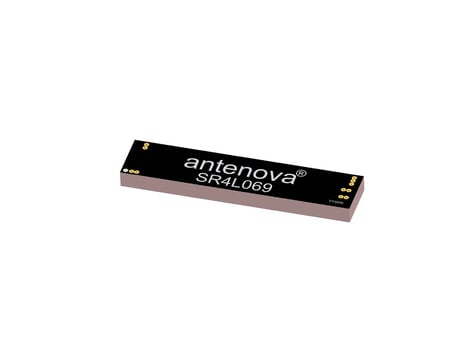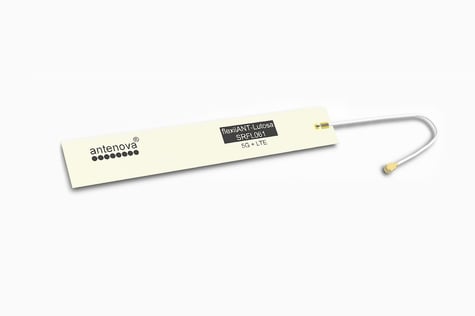5G is an exciting proposition from an applications perspective. It offers improved performance, enhanced data rates, and all of the new possibilities that emerge from this new standard. But, even with all this potential, the real-world performance of a 5G device is determined by its antenna.
Being a licensed spectrum, you will also need your device to pass carrier certification – a process that requires your device to meet certain performance parameters before networks will even allow your device to launch. This makes the antenna selection process an important step, one that can make or break a device launch.
To ensure your antenna of choice is able to offer sufficient levels of performance (for end users and cell carriers), you need to consider:
- The frequency bands you need to support, such as those supported by the carrier or mobile operator
- The size of the device.
- The availability of ground plane length.
- Placement options for an antenna.
- Clearance, especially from metallic components.
- The material used for the product housing.
- The location of the device in its end application.
- Battery/power requirements
- and other factors, including the performance requirements stipulated by cell carriers.
5G networks currently operate on similar radio frequency bands to existing 4G networks. But as the technology moves forward, and the 5G-NR (new radio) networks launch, it is incorporating a wider range of frequencies that provide many more benefits for different applications.
To help you identify the most appropriate antenna, this article reviews some of the most important factors to consider during the selection process, and some of the best choices of antenna for various use cases.
Does 5G offer a significant performance benefit over 4G LTE?
Not all devices are set to benefit from 5G equally. As the frequencies used in the mid band are remaining very similar to 4G LTE, the performance improvements can be relatively minor in some use cases.
However, antennas that are specifically designed for 5G need to be physically larger to operate on the lower 5G bands. For this very reason, a 5G antenna is capable of operating efficiently on 4G bands.
For a small IoT device, the antenna and its required ground plane space can occupy a significant portion of the circuit board. For this reason, a 4G antenna may offer not only higher levels of performance in a smaller space, but the end-device may perform just as well as if it were using 5G.
Ground plane length
 Surface mounted antennas are dependent on the host printed circuit board (PCB) to act as a ground plane for the antenna. A quarter-wave antenna and the PCB ground plane work together to form a resonant circuit. The ground plane must be a quarter of the length of the wavelength to ensure that it does not impact the antenna's efficiency. At the lower 5G bands, this can necessitate that antennas (and their ground plane length) are larger than previously required by 4G LTE, for example.
Surface mounted antennas are dependent on the host printed circuit board (PCB) to act as a ground plane for the antenna. A quarter-wave antenna and the PCB ground plane work together to form a resonant circuit. The ground plane must be a quarter of the length of the wavelength to ensure that it does not impact the antenna's efficiency. At the lower 5G bands, this can necessitate that antennas (and their ground plane length) are larger than previously required by 4G LTE, for example.
This can cause challenges as the shape and size of the host PCB will affect the performance and efficiency of the antenna. The antenna can be placed in the corner of the PCB to maximise ground plane length availability. Or where ground plane requirements cannot be met, innovative off-PCB alternatives such as Flexible Printed Circuit (FPC) antennas can be a viable option.
Battery and efficiency requirements
For mobile devices, power consumption is an important factor in product design as this is a key consideration when specifying and purchasing a device or devices. For example, an IoT drone capturing live videos of wildfires would need enough battery life to cover a certain area and be able to return.
Device size
Wireless devices using mobile networks are typically required or expected to be certain sizes or shapes, such as mobile phones designed to fit in pockets or wireless range extenders expected to be small, discreet devices. In compact devices, space on the PCB is at a premium. Antenna performance is closely related to its location within the host PCB, with each having an optimum position and orientation, which influences radiation patterns. The product datasheet will also indicate clearance areas, which need to be free from other components, metal parts and batteries. These components can block the radiation pattern of the antenna.
Frequency bands
Antennas are designed to perform optimally across a predefined set of frequency bands. 5G networks operate on frequencies that can be broadly classified as high frequency and low frequency. High frequency (mmWave) bands can be used for short-range, high throughput data transfer. Lower frequency wave bands are currently used for 4G and will continue to be used for 5G to improve long-range coverage, but with lower speeds and bandwidth available.
Again, the frequency bands that are accessible to a given antenna will be influenced by the length of the ground plane. As mentioned above, a minimum of a quarter wave ground plane is required, so lower frequency, longer wavelength bands will require a longer ground plane. Some network carriers use frequencies as low as 617 MHz, this requires a ground plane length longer than 100 mm.
When selecting an antenna for a cellular device, it is essential to consider each of the above factors. Datasheet performance alone doesn’t guarantee a high-performing product.
Starting the antenna selection process
In the US, the larger operators (or carriers) for cellular networks are AT&T, Verizon, T-Mobile and Sprint. Recently T-Mobile and Sprint have merged, this is good news for IoT products, as the merged network has good coverage, therefore a product can use this network for communications.
However the T-Mobile low-band starts at 617MHz, therefore to use this network, the product must have a longer ground plane compared to the AT&T or Verizon bands. See the table below, the lowest frequency on AT&T is 699MHz, this corresponds to a ground plane length of 10.1cm. In comparison, T-Mobile requires a ground plane length of 11.5cm.
AT&T – Bands 2, 4, 5, 12, 14, 17, 29, 30, 66
| Band | Frequency |
| 12 | 699 – 716 & 729 – 746MHz |
| 14 | 788 – 798 & 758 – 768MHz |
| 17 | 704 – 716 & 734 – 746MHz |
T-Mobile – Bands 2, 4, 5, 12, 66, 71
| Band | Frequency |
| 71 | 617-698MHz |
| 12, 13 | 698-798MHz |
Outlining the ground plane availability, efficiency requirements, device size and frequency bands will help to narrow down antenna choice and help determine which type of antenna would work best for the end application.
Antenova manufactures a wide range of antenna products to suit different devices and their applications. To see our full range of antennas for cellular devices – including 5G, 4G and 3G – browse our range of 5G antennas or download our antenna comparison guide.
Antenova has recently launched the Allani 4G/5G SMD antenna, it offers excellent performance and operates on the 617-698MHz band. It is suitable for all the carriers in the US, EMEA, and Asia.




